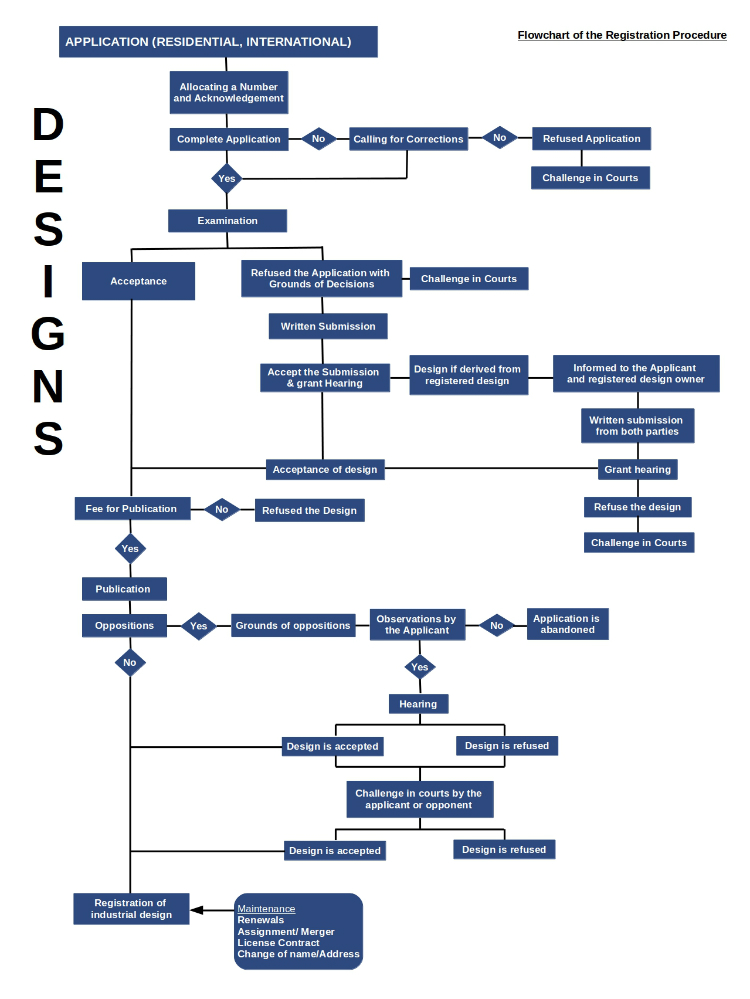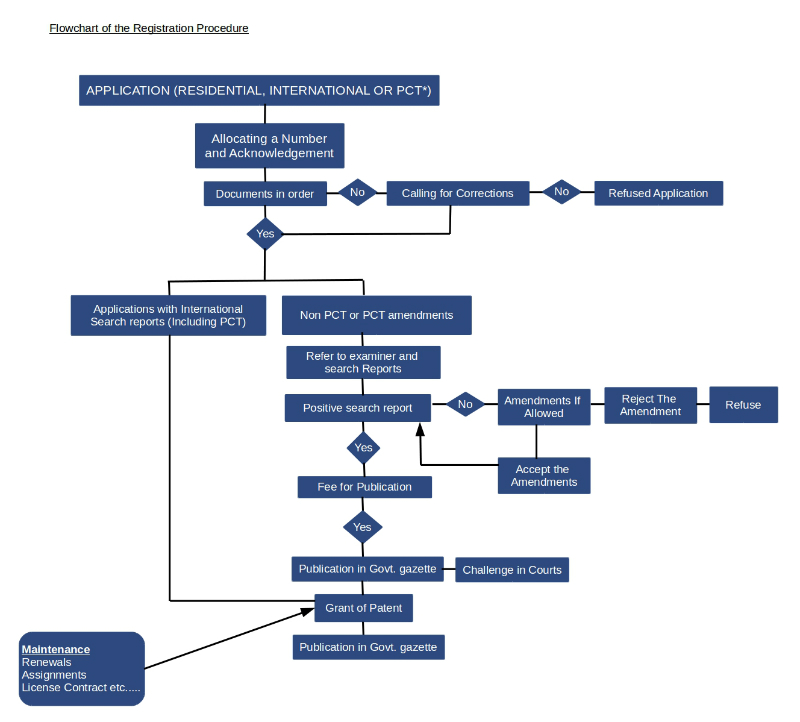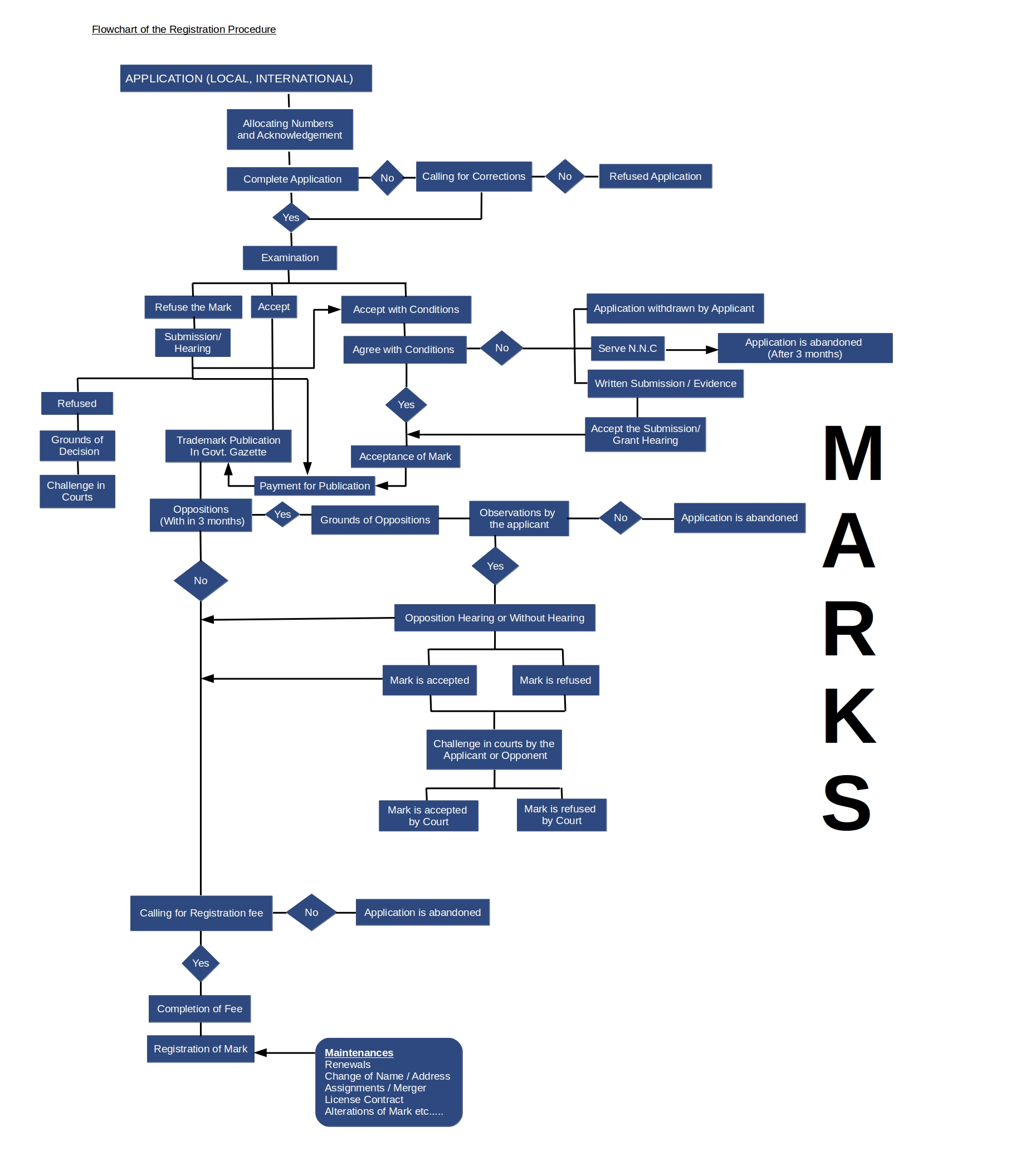- You are here:
-
Home

-
Services

-
Geographical Indications

- Services
Services
- Details
- Written by hansani
- Category: Services
What is GI?
It is a name or sign that is used on goods by a group of producers or manufactures and that indicates that the goods have special quality, character or reputation because they are originating from a specific place (country or a geographical area of a country). (eg. Ceylon Tea, Ceylon Cinnamon, Ceylon Sapphire, Nuwaraeliya Tea, Ceylon Pepper and Ceylon Cashew)
Why protected?
As they carry the symbol of quality, character or reputation of the particular goods, it helps greatly to commercialize the goods. Protection given to GI’s will provide facilitation for the owners to face the competition when exporting their products to the international markets. The abuse ormisrepresentation of GIs is harmful to both the owners of GIs and the consumers as well.
Trademark vs. GI
A mark is a sign serving to distinguish the goods or services of different enterprises. GI indicates and informs the consumers and traders that a product is originating from a certain country or a geographical location of a country and has some special quality, character or reputation, due to its geographical location.
How protected?
The law protects GIs by prohibiting the use of it for the goods that are not actually originating from the respective geographical areas. The court can issue injunctions to prevent such use. In Sri Lanka, GIs are currently protected under Trade Mark registrations as Collective marks and Certification marks. GIs can also be protected under the laws of unfair competition and misrepresentation as to GI is an offence punishable as provided in the Act.
Currently new regulations are being drafted to provide facilities for GI registration in Sri Lanka which will enhance protection. Registration of GIs will facilitate exporters to penetrate into international markets and to prevent misuse of Sri Lankan origin GIs by other competitors.
Eg – Ceylon Tea and Ceylon Cinnamon.
- Details
- Written by hansani
- Category: Services
What is Industrial Design?
It is the ornamental or aesthetic aspect of an article. It does not have any functional character. A design can be three dimensional such as shape of an article (design for a toy, bottle, jewelry or chair etc.) or two dimensional such as pattern or lines. (Design for a greeting card etc).
Protected Designs
A design is protected if it is new and if it does not consist of scandalous design or a design contrary to morality, public order or public interest. A design is new if it has not been made available to the public anywhere in the world before the date of application for registration.
How They are Protected?
They are protected upon registration with the Intellectual Property Office. A registered design is protected for five years and renewable for two more terms of five years. An application can be filed with the relevant the IP Office using form D1 with the relevant fee (See regulations)
Rights
The owner of the design can exercise exclusive rights such as making, using, importing and exporting articles comprising of such protected design.
Why they are Protected?
An Industrial Design makes articles attractive and appealing and therefore increases the commercial value and the marketability. The protection assures a fair return to the creator and promotes investment. They contribute to the economic development by encouraging creativity in industry, arts and crafts white expanding commerce and creating more job opportunities.
Registration Abroad
Designs registered in Sri Lanka are valid only in Sri Lanka. If the owner expands the business to other countries it is advisable to register the said design in those countries. Applications in each country where the protection is sought under the respective national laws. However, Priority can be claimed under the Paris Convention for the protection of Industrial Property in its member countries. (within 6 months from the date of application in IP Office, Sri Lanka)
- Details
- Written by hansani
- Category: Services
Why Patents?
Patents protect inventions and ensure the inventors the benefits resulting from the inventions thereby providing incentives for inventiveness, encouraging further inventions and promoting investment. This will spur the economic and technological development. Patent applications already published disclose newly invented technologies and are available for anyone to refer to. They contain vital information for researchers, inventors and enterprises who want to keep up with new developments, carry out R&D activities and use new technologies.
What is a Patent?
The State grants the inventor, by means of a patent, a monopoly, i.e. the right to exclude others from making, using and selling the patented invention for a period of 20 years from the date of application. The owner of the patent can use, or commercialize by selling or licensing the patented technology and derive financial benefits which will contribute to the growth of the economy.
What is an Invention?
An Invention is a practical solution to a problem in the field of technology. An invention may relate to a product or a process.
What can be Patented?
An invention is patentable if it (a) is new (not known in the existing knowledge) (b) industrially applicable (functional and operative) and (c) involves an inventive step (the development or improvement is not obvious to a person of average skill in the particular field.) A patent may be granted to an improvement of a valid patented invention. But when it is being used, there is a possibility of infringing the rights of the owner of the first patent. Therefore, it is advisable to negotiate with the holder of the first patent prior to use.
How a Patent is Granted?
An application can be filed at the National Intellectual Property Office using the prescribed form P1 (refer to the regulations). A document should be submitted with the application form describing the invention clearly and completely along with the claims and the prescribed fee. (refer to the regulations). A search report prepared by an International Searching Authority (ISA) or alternatively, a request can be made to the IP Office to refer the application to a local patent examiner for a search report.
- The IP Office will examine the application and the documents as to the requirements of the IP Act.
- If formal requirements are fulfilled and the application is filed along with relevant documents, the examination will be carried out to ascertain novelty.
- If the patent application fulfills the criteria for patentability, the patent will be granted.
- The accepted applications will be published in the government gazette and patents will be granted, if there are no oppositions against the granting of the Patent.
Renewal
A patent is valid for 20 years from the date of filing. The patent must be renewed annually from the expiration of the second year from the date of grant by paying a fee (please refer to the regulations for fees structure).
What is not patentable?
(i) discoveries, scientific theories and mathematical methods;
(ii) plants, animals micro organisms other than transgenic micro organisms and an essentially biological process for the production of plants and animals other than non biological and micro-biological processes;
(iii) schemes, rules or methods for doing business, performing purely mental acts or playing games
(iv) methods for treatment of human or animal body by surgery or therapy and diagnostic methods practiced on human or animal body
(v) inventions which are necessary to protect public order, morality including human animal or plant life, health, or to avoid serious prejudice to environment.
How to Protect Inventions Abroad?
A patent is valid only in the country where it is granted. As Sri Lanka is a member of the Paris Convention for the protection of industrial property, Sri Lankans can obtain patents for their inventions in any member country of the Paris Convention under the national law of the relevant country. Almost all the countries are members of this convention. Applicant can claim priority under the Paris Convention for the protection of Industrial Property in its member countries which means that claiming the effect of initial filing date in subsequent filing in other member states (if filed within 1 year from the date of application in Sri Lanka).
All Sri Lankan nationals or residents can apply under the Patent Cooperation Treaty (PCT) administered by World Intellectual Property Organization (WIPO) in Geneva. You may apply for a patent in many countries (Member Countries of PCT) by filing single application to WIPO. Counties which the applicant intends to file national application later should he designated in the PCT application. PCT filing is a simpler procedure than making several applications in many countries. PCT application has the same effect as a national application filed in the designated countries (For more details log on to www.wipo.int)
- Details
- Written by hansani
- Category: Services
What is a Mark?
A mark- trademark or service mark- is a visible sign that is capable of distinguishing the goods or services of different enterprises. A trademark relates to goods whereas a service mark relates to services. In addition, there are two more kind of marks – Certification marks and Collective marks. Certification mark is granted to the owner for goods or services if he certifies as to the origin, material and manufacturing method of goods or performance of service, quality and accuracy with regard to its use. A Collective mark is a mark serving to distinguish the origin or any other common characteristic of goods or services of different enterprises which use the Mark under the control of the registered owner.
What constitutes a mark?
A mark may consists of a word(s), a symbol(s), a device(s), letters, numerals, a name, surname or geographical name, a combination or arrangement of colors and shapes of goods or containers etc. A mark should be a visible and a distinctive sign and it should always be capable of distinguishing the goods or services of different enterprises.
Functions of a mark
It has several functions such as :
- distinguishes the goods or services of its owner from those of others
- indicates the source of the goods or services
- individualizes the goods or services of the owner
- enables the owner to reach the customers
- helps the consumers to make the choice in the market etc.
Registered and unregistered Marks
A mark which is registered at the National Intellectual Property Office under the law is considered as a registered mark. A mark can be used even without registration. Unregistered marks can be protected under the unfair competition law or common law action for passing off.
Why registered?
It is highly recommended to register a mark, as a trade or service mark. The registration of the mark gives its owner exclusive right to use, assign and license the mark. These rights can be easily enforced effectively through civil or criminal court procedure or both. Owner of the mark can restrain others from using his mark or a mark deceptively resembling his mark. Owner is even entitled to claim damages for violating his trade mark rights.
Registrable Marks
The marks which are not inadmissible under sections 103 and 104 of the Intellectual Property Act No: 36 of 2003 are registrable. A mark is inadmissible if it is descriptive of the goods or services concerned, if it is not capable of distinguishing the goods or services from those of others and if it is deceptively similar to the other registered or well-known marks.
How to register/ appeal?
Form M1 should be used to file an application. The processing of the application involves a number of work steps. The mark is examined to see whether it complies with formal requirements and whether it is not inadmissible under sections 103 and 104 of the Act. If the IP Office refuses it, applicant can make submissions against the decision or ask for a hearing within one month from the date of refusal. If it is still refused, the decision can be challenged in the Court (The Commercial High Court of Colombo).
A mark is first accepted for the publication in the Gazette. A period of 3 months is given to the public to file opposition after the publication. If there is any opposition, the IP Office will send the applicant a copy of same. Thereafter the applicant is required to forward observations against the grounds of opposition. IP Office will conduct an inquiry if necessary into the opposition with the participation of the applicant and the opponent. After the inquiry, the mark may get registered or refused. If it is refused applicant can challenge the decision in the Court. If it is accepted, the registration will be proceeded with upon the payment of the registration fee by the applicant. (Please refer to Part V of the Act and Regulations made under the Act.)
Who can register?
Any person or body of persons corporate and unincorporated. (individual (s), companies, partnerships, associations etc).
Period of validity and renewal
The registration is valid for a period of 10 years from the date of application and is renewable on the payment of the fee for further periods of 10 years. Please refer to the fee schedule published in the gazette which is available in the NIPO website.
Protection abroad
Marks registered in Sri Lanka are valid only in the territory of Sri Lanka. If the applicant does business in other countries, it is advisable to register the mark in those countries. Applications should be filed in each country in which the applicant seeks the protection under the respective national law. (Sri Lanka is not yet a member of the Madrid Protocol. When Sri Lanka becomes a member, an applicant may make one single application with one single fee calculated according to designations of countries by which his mark can be protected in over 114 member States. However, priority can be claimed under the Paris Convention for the protection of Industrial Property in its member countries. (within 6 months from the date of application in Sri Lanka).
Trade Names
A trade name is the name under which a person does its business – A person’s name, partnership name etc. Trade names can be protected under the IP Act. However, it can be registered as a mark only. Thus, it is advisable to register the trade name as a mark.
- Details
- Written by hansani
- Category: Services
What is Intellectual Property?
Intellectual Property means the rights resulting from the creations of the human mind. It generally embraces the rights relating to:-
- literary and artistic works such as novels, poems and plays, films, musical works, computer programs, databases, drawings, paintings, photographs and sculptures, and architectural designs;
- performances of performing artists, sound recordings and broadcasts;
- inventions;
- industrial designs;
- trademarks, service marks, commercial names and designations;
- protection against unfair competition and
- all other rights resulting from intellectual activity in the industrial, scientific, literary and artistic fields such as lay-out designs of integrated circuits, new varieties of plants (plant breeders’ rights), Geographical Indications and undisclosed information including trade secrets.
Intellectual Property is traditionally divided into two categories: (i) Industrial Property which includes patents for inventions, trademarks and service marks, industrial designs and Geographical Indications and (ii) Copyright which covers literary and artistic works. The rights of performing artists, producers of sound recordings and broadcasting organizations are known as the related rights or neighbouring rights.
Intellectual property rights share the characteristics of other property rights – they can be owned, alienated and licensed. They allow the creator or owner of a patent, trademark, or copyright etc. to benefit from his or her own creative work. These rights have been recognized in several International Conventions on Intellectual Property.
Why promote and protect intellectual property?
There are several compelling reasons such as: Human creativity is the foundation of human civilization, progress and well-being. The protection of creative efforts encourages further creations, enhances investment, and stimulates transfer of technology and strengthening economic growth of the country. Protection of intellectual property thus creates new industries and more employment opportunities whilst enhancing the quality and enjoyment of life. An efficient and equitable intellectual property system can effectively contribute to the economic, technological, social and cultural development. The intellectual property system attempts to achieve a balance between the rights of the creators and the interest of society as a whole, thereby introducing an environment where the creativity in every sphere of human endeavor can flourish to the benefit of all.
International Dimensions
The World Intellectual Property Organization (WIPO), a specialized agency in the United Nation’s System, is mandated to promote the protection of Intellectual Property rights in all the member states. WIPO currently administers 26 international conventions on Intellectual property. By December 2018 WIPO has 191 member States. WIPO is based in Geneva, Switzerland and its website is http://www.wipo.int.
In addition, there are other international organizations, which administer certain areas of Intellectual Property such as UNESCO (Universal Copyright Convention), World Trade Organization (the Agreement on Trade Related Aspects of Intellectual Property Rights- the TRIPS Agreement) and the International Union for the Protection of New Varieties of Plants (International Convention for the Protection of New Varieties of Plants).
In Sri Lanka
The current intellectual property legal regime in Sri Lanka is governed by the Intellectual Property Act, No. 36 of 2003 which makes provisions for a variety of intellectual property rights and their acquisition, management and enforcement. The National Intellectual Property Office of Sri Lanka established under this law is the only Government Department, which is responsible for the administration and control of the intellectual property system in Sri Lanka.
Regulations made under the Intellectual Property Act have been published in,
- the Gazette Extraordinary No. 1415/18 of 10th October 2005
- the Gazette Extraordinary No. 1455/10 of 17th May 2006
- the Gazette Extraordinary No. 1527/18 of 13th December 2007








